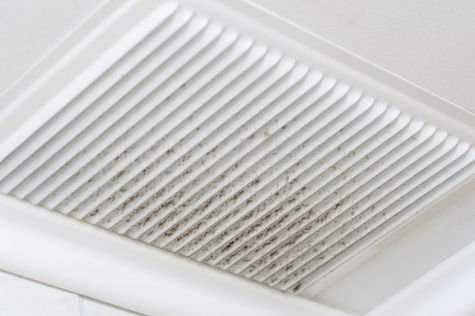Have you recently begun noticing a strong smell of mildew when your home’s HVAC system is running? If so, then it may be time to examine your system for a mold problem. Over time, it is not uncommon for mold to begin growing within the internal components of an HVAC system. While this is not inherently harmful, it can become a problem if you start to smell the mildew or mold; this means that the mold spores are actually making their way into the air, which can be hazardous to your health. Specifically, mold is known to be damaging to the human respiratory system and can even further aggravate asthma for those who have it. Fortunately, if you are experiencing mold in your home’s HVAC system, there are some steps you can take to remove it and begin enjoying healthy air quality once again.
What Causes Mold in HVAC Systems?
Before you can tackle the problem, it is important to understand what causes mold to grow within your home’s HVAC systems. The causes can vary greatly depending on whether you have found mold in your heating or cooling system.
For example, if you believe that you have noticed mold in your air conditioning system, then there is a good chance that this has been caused by excess moisture that is naturally created when condensation occurs on the unit itself. After all, condensation is an inherent process any time you turn your air conditioner on. In and of itself, condensation is not a problem; it is only when there are times of high humidity and the excess moisture released by condensation is not evaporated as a result. Over time, this can create a prime environment for mold growth. In heating systems, mold growth is not quite as common, but it can still happen. Most of the time, this simply occurs in humid conditions.
HVAC System Mold Growth Removal
What often makes mold removal from an HVAC system tricky is the fact that many of your HVAC system’s internal components can be very difficult to gain access to. Still, there are some basic steps that you can follow to tackle the problem and, with any luck, keep it from coming back in the process.
The first thing you will want to do is to create a solution that will kill the mold and keep it from re-growing. This solution should consist of a mixture of one part detergent to one part water. From there, add an equal part of store-bought mold killer, plus baking soda and a borax solution. Combine all of these together, and do not add bleach.
Next, you will need to don some protective materials. After all, mold can be a very dangerous thing to encounter; failure to take these precautionary steps can result in difficult breathing and illness. Be sure to wear some rubber or Latex gloves, a breathing mask, safety goggles, and clothing to cover as much skin as possible.
Next, it is time to actually apply the mold-killing solution. It is generally best to do this using a spray bottle. However, it is generally best to keep a washcloth or sponge with you so that you can scrub problem spots down. As you do this, you should begin to notice the mold come off. Once you seem to have gotten rid of all of the visible mold, you should take the time to carefully dispose of the rag you were using. Do not reuse this rag, even if you plan on washing it; the mold spores contained within it could lead to future mold regrowth.
Next, if you believe the original problem was caused by humid air, then it may be time to pick up a dehumidifier for your home. This will cut down on humidity and lead to less favorable conditions for mold regrowth in the future. Still, it is important that you check your HVAC system again every couple of weeks to make sure that the mold is not coming back. If it is, then it may be time to call our a professional HVAC technician, as the problem may be caused by something that an expert will need to repair.
As you can see, there are many steps you can take to remove mold in your home’s HVAC system. Just be sure to take the proper safety precautions and do not hesitate to call out an HVAC technician for help if you need to. From there, you can begin enjoying better air quality in your home in no time.
For more HVAC ideas and information I recommend checking out Calfinder.
Have experience dealing with mold in your HVAC system? Please comment below I would love to hear your story and what you did to solve to the problem.
Written by Timothy Smith. Tim is interested in all things DIY and home improvement-related.


5 comments